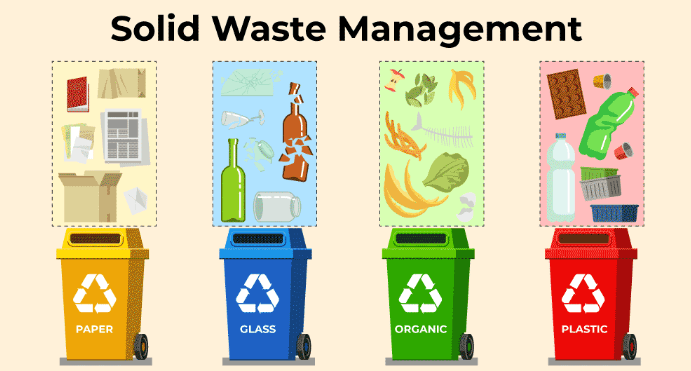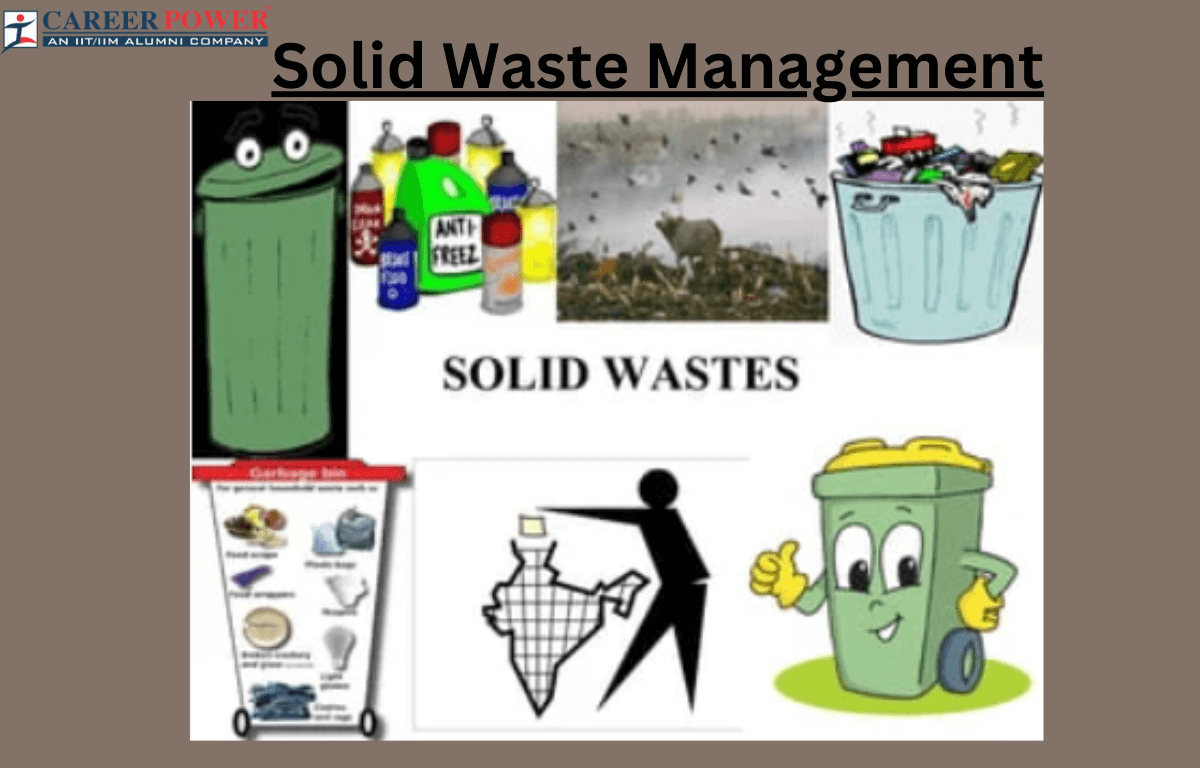Waste management is about handling, collecting, and disposing of waste in an environmentally friendly way. It involves reducing, reusing, and recycling items to minimize trash. Communities use bins for different types of waste like recyclables and organic materials. Garbage trucks pick up the waste, which is then taken to landfills or recycling centers. Proper waste management helps keep our environment clean and safe. We have briefly described solid waste management, its effects, and sources below in the article.
What is Solid Waste Management?
Solid waste management is the process of collecting, storing, treating, and disposing of solid waste in an environmentally and socially responsible manner. It involves various activities such as collection of waste, transportation, recycling, composting, and landfill disposal. The goal is to reduce the adverse effects of waste on public health and the environment. Effective solid waste management systems help minimize pollution, conserve resources, and promote sustainable development.

Solid waste management also encompasses the creation of policies and regulations to control waste generation, as well as public awareness and education programs to encourage proper waste disposal and recycling habits. Waste management practices vary worldwide and can include incineration, landfilling, biological treatment, and recycling. Recycling is a key component, involving the conservation of waste materials into reusable products to reduce the strain on natural resources and minimize environmental impact. Additionally, waste management strategies are continually evolving to address emerging challenges, such as electronic waste and plastic pollution, in order to create a cleaner and more sustainable future.
Waste Disposal
Waste disposal refers to the proper management and removal of solid waste materials generated by human activities. It is crucial for maintaining environmental health and safety. There are various methods of waste disposal, including landfill, incineration, recycling, and composting. Proper waste disposal is vital to prevent pollution, conserve resources, and protect the environment and public health. Many countries have regulations and guidelines in place to ensure that waste is managed responsibly.
- Landfill: Waste is buried in landfills, which are specially designed-sites where waste is isolated from the surrounding environment. Properly engineered landfills minimize the risk of environmental pollution.
- Incineration: Waste materials are burned at high temperatures in controlled settings. This process reduces the volume of waste and can generate energy, but it also produces emissions that need to be carefully managed.
- Recycling: Waste materials like paper, glass, plastics, and metals are collected, processed, and transformed into new products. Recycling helps conserve resources and reduce the strain on the environment.
- Composting: Organic waste, such as food scraps and yard waste, can be composted. Composting is a natural process where organic materials decompose and turn into nutrient-rich soil conditioners.
- Waste-to-Energy: Some waste materials, especially non-recyclable plastics, can be used to generate energy through various technologies like incineration or gasification.
- Hazardous Waste Disposal: Hazardous waste, such as chemicals and certain industrial by-products, requires special handling and disposal methods to prevent harm to human health and the environment.
Sources of Solid Waste
Solid waste can come from various sources. Managing and reducing solid waste is crucial for environmental sustainability and public health. Some of the sources of solid waste have been discussed below:
| Different Sources of Solid Waste | |
| Sources of Solid waste | Examples |
| Residential Waste | Household items, old furniture, and appliances. |
| Commercial Waste | Office paper, plastic, and electronic waste. |
| Industrial Waste | Factory waste, manufacturing by-products. |
| Construction and Demolition | Concrete, wood, steel, construction debris. |
| Institutional Waste | School waste, hospital waste, and office waste. |
| Biomedical Waste | Used syringes, medical equipment, and biological waste. |
| Agricultural Waste | Crop residue, animal manure, pesticide containers. |
| Electronic Waste (E-Waste) | Computers, TVs, smartphones, electronic devices. |
| Hazardous Waste | Chemicals, batteries, and certain electronic devices. |
| Municipal Waste (MSW) | General household waste, and mixed sources. |
| Special Waste | Tires, mattresses, and bulky items. |
- Residential Waste: This includes household items like packaging, old furniture, appliances, and other discarded items.
- Commercial Waste: Waste generated from businesses, offices, and commercial establishments. It can include paper, plastic, electronic waste, and more.
- Industrial Waste: Waste produced by factories and manufacturing plants. This can be hazardous waste or non-hazardous waste, depending on the industry.
- Construction and Demolition Waste: Debris from construction sites, including concrete, wood, steel, and other materials.
- Biomedical Waste: Waste from healthcare facilities, including used syringes, medical equipment, and biological waste.
Effects of Solid Waste Management
Proper solid waste management has several significant effects on the environment, public health, and overall well-being of communities. Proper solid waste management is crucial for environmental protection, public health, and the sustainable development of communities.
- Environmental Conservation: Effective waste management reduces pollution, preserves natural resources, and minimizes the environmental impact of waste. Recycling and composting also help conserve resources by reusing materials and reducing the demand for raw resources.
- Reduction in Pollution: Proper disposal methods prevent harmful substances from contaminating soil, air, and water sources. This, in turn, reduces pollution, protecting ecosystems and wildlife.
- Prevention of Diseases: Inadequate waste management can lead to the spread of diseases through contaminated water and air. Proper disposal and treatment of waste prevent the proliferation of waste prevent the proliferation of harmful microorganisms, reducing the risk of diseases in human populations.
- Energy Conservation: Waste-to-energy technologies can generate energy from organic waste materials, reducing the dependency on fossil fuels and promoting renewable energy sources.
- Community Aesthetics: Well-maintained waste management systems enhance the overall appearance of communities. Clean public spaces contribute to a sense of pride and well-being among residents.
- Resource Recovery: Proper waste management promotes the recovery of valuable resources from waste streams, such as metals, plastics, and organic materials. Recycling and reusing these resources reduce the need for raw materials, conserving natural resources.



 50 Vegetables Name for Kids in English a...
50 Vegetables Name for Kids in English a...
 Food Chain: Definition, Types, Examples,...
Food Chain: Definition, Types, Examples,...
 Human Respiratory System: Definition, Di...
Human Respiratory System: Definition, Di...













